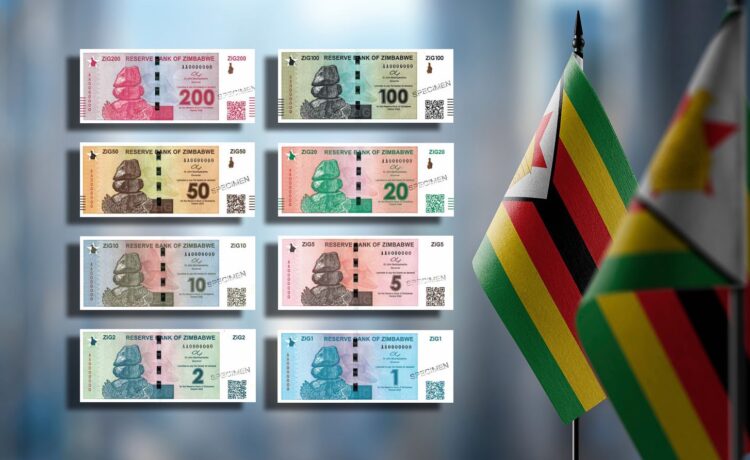
HARARE – Nearly five months after introducing a new gold-backed currency to curb rampant inflation, Zimbabwe is once again facing a familiar economic crisis.
The Zimbabwe Gold (ZiG), launched on April 5, was intended to stabilize the country’s economy, but the currency has already begun losing value, leading to renewed dependence on the US dollar.
Zimbabwe has grappled with currency instability for over two decades. The introduction of the ZiG, backed by 2.5 tonnes of gold and $285 million in foreign currency reserves, was a response to the rapid depreciation of the Zimbabwe dollar (ZWL), which lost over 80% of its value in the first quarter of 2023.
To support the new currency, President Emmerson Mnangagwa’s government implemented strict measures, including cracking down on street traders accused of fueling the parallel foreign currency market and tightly controlling the official exchange rate. Initially, the ZiG held steady at an official rate of ZiG14.5 to $1, only slightly depreciating from the fixed rate of ZiG13.5 to $1 at its launch. However, on the black market, the ZiG has plummeted, now trading at ZiG24 to $1.
Economic experts warn that Zimbabwe’s new currency could follow the same downward trajectory as its predecessors. Economist Eddie Cross, an advisor to President Mnangagwa, expressed concern about the currency’s future, noting that if immediate action isn’t taken, the ZiG may not recover.
Cross pointed to the country’s struggles with de-dollarization as a significant factor in the ZiG’s instability. He highlighted the disparity between the official and parallel market exchange rates, which has fueled speculation and undermined confidence in the new currency.
Zimbabwe’s largest sugar producer, Hippo Valley, illustrated the impact of the currency crisis in its recent financial report, revealing that while revenues in US dollars were decreasing, demand for settlements in foreign currency was rising. The Confederation of Zimbabwe Industries (CZI), the nation’s largest industry body, echoed these concerns, noting that companies are struggling to access foreign currency through official channels, which is exacerbating the depreciation of the ZiG on the parallel market.
Morgan & Co., a Harare-based advisory firm, warned that additional pressures on government spending, including the need to import more grain due to an El Nino-induced drought and recent infrastructure investments, could further destabilize the ZiG in the coming months.
As the situation worsens, Cross has called for an end to Zimbabwe’s multicurrency system, advocating for the ZiG to become the country’s sole legal tender. Zimbabwe’s troubled currency history, including a hyperinflation crisis in 2009 that forced the country to adopt a basket of foreign currencies, adds to the challenge of achieving economic stability.
President Mnangagwa has suggested that the ZiG could become the sole legal tender by 2030, but with the economy largely informal and heavily reliant on the US dollar, experts warn that reversing dollarization will be a daunting task. The International Monetary Fund (IMF) notes that only four countries—Poland, Israel, Mexico, and Pakistan—have successfully dedollarized in the past two decades.
As Zimbabwe’s currency crisis deepens, the future of the ZiG remains uncertain, with economists urging swift and decisive action to prevent another collapse.

